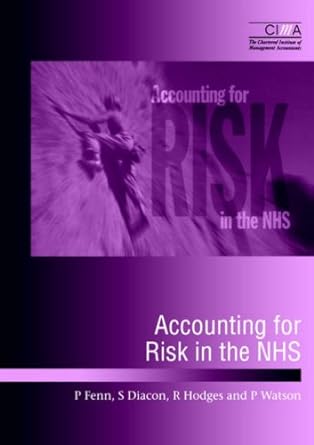Question
1.Which of the following businesses buys products from other businesses to sell them to customers? a. A manufacturing business b. A service business c. A
1.Which of the following businesses buys products from other businesses to sell them to customers?
a. A manufacturing business b. A service business c. A merchandising business d.
2.An investment business Capital market stakeholders have an interest in a company because: a. they depend upon the continued success of the company for keeping their jobs. b. they collect taxes from the company. c. they purchase the company's products or services or sell their products or services to the company. d. they provide major financing for the business.
3.Pelican, Inc. had revenues of $395,000, expenses of $155,000, and dividends of $54,000 during the current year. Based on the given information, which of the following statements is true? a. Total retained earnings increased by $240,000 during the current year. b. Net income for the current year totaled $186,000. c. Total retained earnings decreased by $186,000 during the current year. d. Net income for the current year totaled $240,000.
4.A partnership is owned by two or more individuals. True False A limited liability company combines attributes of a partnership and a corporation. True/False
5.The basic financial statements include the: a. bank reconciliation statement. b. trial balance. c. balance sheet. d. ledger account.
6.If a $15,000 purchase of equipment for cash is incorrectly recorded as an increase to equipment and as an increase to cash, at the end of the period assets will: a. equal liabilities and stockholders' equity. b. exceed liabilities and stockholders' equity by $30,000. c. exceed liabilities and stockholders' equity by $40,000. d. exceed liabilities and stockholders' equity by $15,000.
7.The statement of cash flows is integrated with the balance sheet because: a. the cash at the beginning of the period plus or minus the net income equals the end of period cash reported on the balance sheet. b. the cash at the beginning of the period plus or minus assets and liabilities equals the end of period cash reported on the balance sheet. c. the cash at the beginning of the period plus or minus the cash flows from operating activities equals the end of period cash reported on the balance sheet. d. the cash at the beginning of the period plus or minus the cash flows from operating, investing, and financing activities equals the end of period cash reported on the balance sheet.
Step by Step Solution
There are 3 Steps involved in it
Step: 1

Get Instant Access to Expert-Tailored Solutions
See step-by-step solutions with expert insights and AI powered tools for academic success
Step: 2

Step: 3

Ace Your Homework with AI
Get the answers you need in no time with our AI-driven, step-by-step assistance
Get Started


